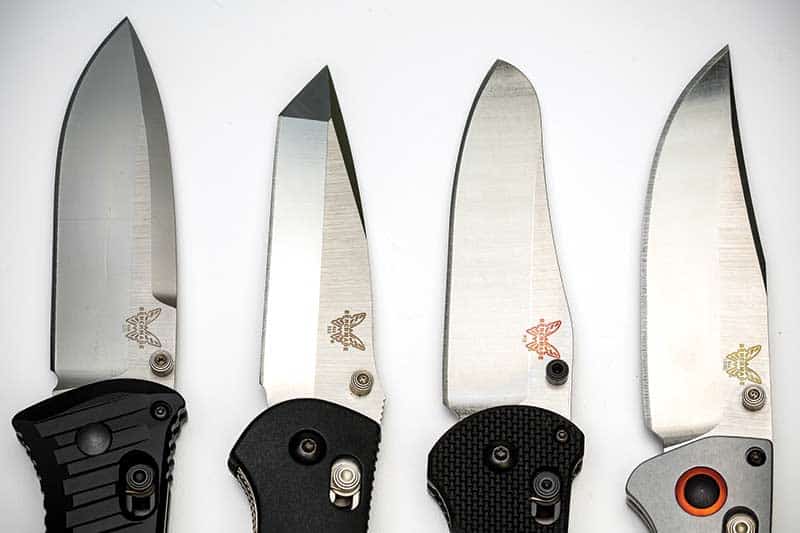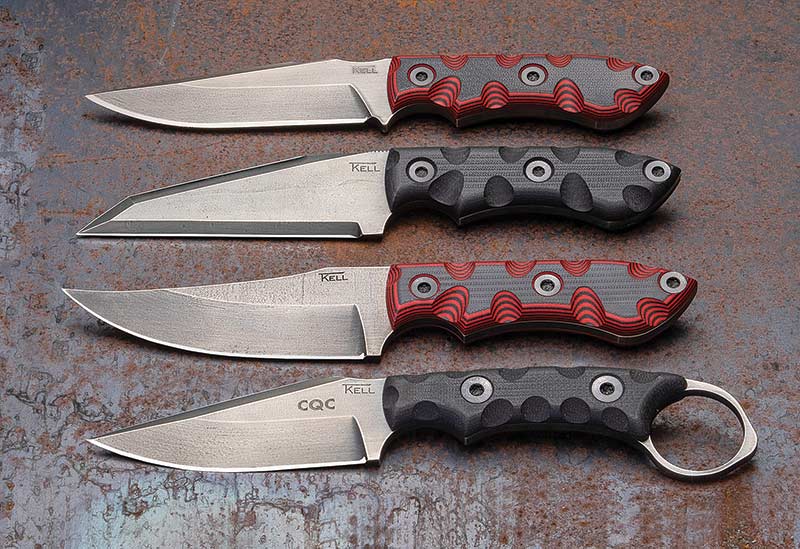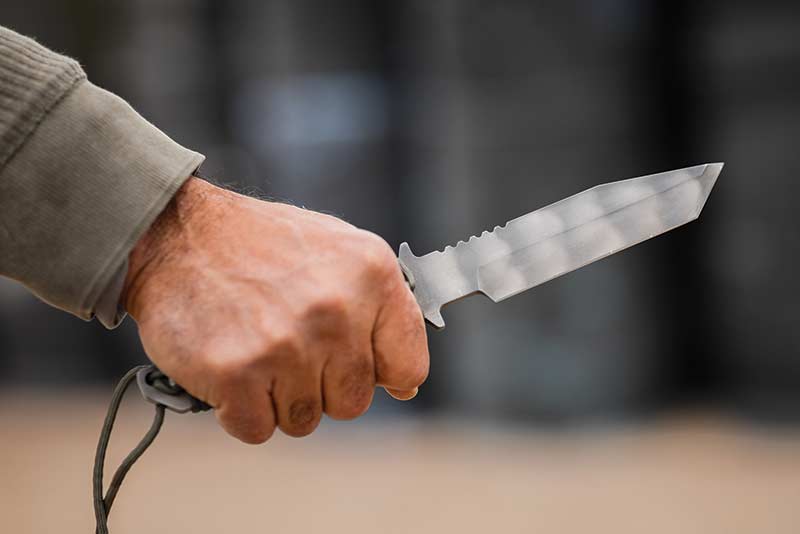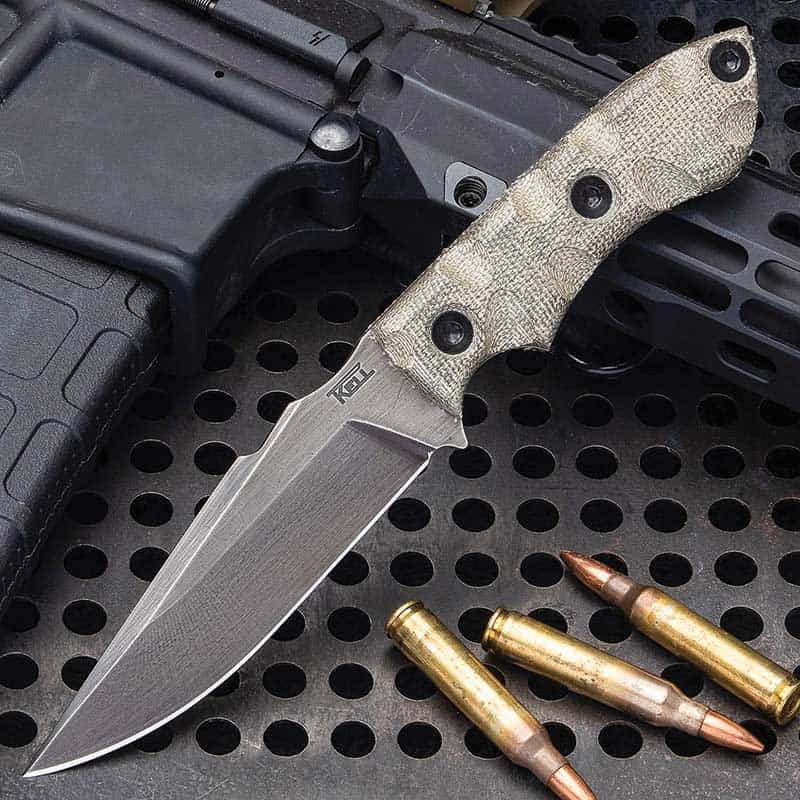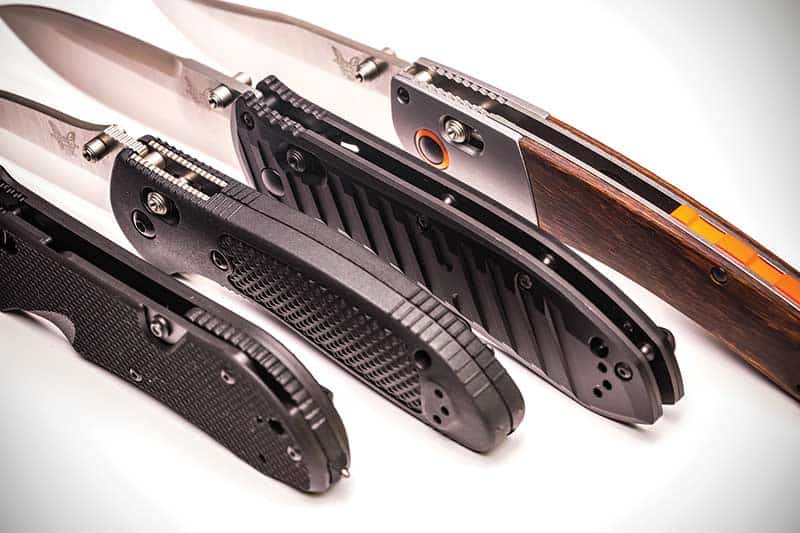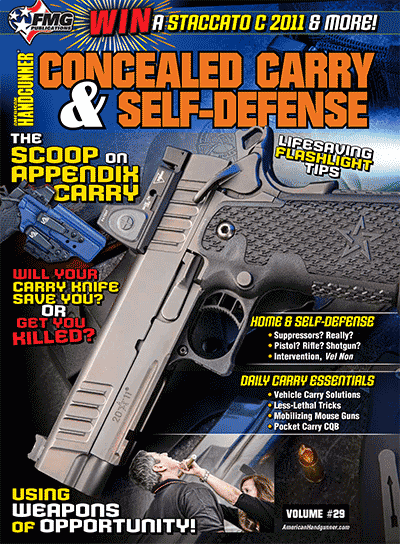Defense Or Deceased?
Carrying a Knife Might Get You Killed
If someone is carrying a concealed firearm for self-defense, you would hope that person has some experience in gun safety, competent handling skills and marksmanship. If not, when an incident occurred where they needed to go to guns in their defense, then they may end up shooting themselves, have their gun taken away (and possibly used against them) or unintentionally hurting another person.
Often gun owners are also knife owners. Unlike a firearm, knives are carried for more than one purpose. One is for daily chores such as opening boxes, cutting twine and the like. The other may be intended for self-defense purposes. Much like the gun, without formal training in edged-weapon self-defense, a knife carrier has a very high likelihood of having no success at all using it in a defense capacity.
Everyone Bleeds
Most people who carry a knife have either no training or learned all they know from the movies or what they’ve seen online. These same folks also don’t realize how much they want to avoid getting into a scrap of any kind involving a knife. Buying a guitar and not knowing how to play it, with no lessons or prior experience, you wouldn’t have the remotest idea of how to use one. The same applies to carrying a knife for self-defense.
Everybody bleeds when cut. Recall a time when you accidentally either cut yourself shaving, or with a kitchen knife or even a paper cut. You probably didn’t even feel it at the time but when you looked at the scratch, it was leaking red. Now imagine a situation where a street thug, with plenty of years behind bars and adept with a prison shank, is hell-bent on ripping your heart out with impunity. Might you be susceptible to severe bodily injury or death?
The average knife owner has maybe watched a few movies with a knife-fight scene and believe that’s how it is in real life. In addition to prisons and federal penitentiaries, there are several formal edged-weapon martial arts from around the world hailing from countries such as Japan, Myanmar, Thailand, the Philippines and Indonesia, to name a few.
No Winners
Any one of these edged-weapons training systems will teach you on day one you never want to be in a knife fight. The reason is two trained fighters in proximity will eventually do the other one in.
Imagine a toe-to-toe gunfight where both fighters dump an entire magazine into each other at arm’s length. Who walks away from that without being shot? Look at two equally skilled professional boxers standing toe-to-toe slugging it out for 12 rounds. Does either boxer walk away without getting hit or injured?
The same applies to a knife fight with two people armed with an edged weapon going at it toe-to-toe. Much like the gunfighters or the boxers, do you think either one walks away without a scratch?
Since before written history in the Philippines, a knife fight was considered a death sentence for both combatants. So much so according to the master teachers (mga guro), two fighters would be instructed to dig a shallow trench and then tie one rope around each other’s waist. The rope was so neither could run away and the shallow grave so it would be easy to cover both bodies with dirt. Nobody ever got out alive — the reason no guro worth his salt teaches knife fighting to this very day.
Training? For a Knife?
Everyone in the firearms industry recommends finding a competent instructor or gun school. It is incumbent upon a new gun owner to learn all the many important aspects and recommended skills required of appropriate gun ownership. Especially in carrying for self-defense, you would need to know the bare basic minimums such as gun safety, maintenance, storage, access, carry, deployment, loading, reloading and marksmanship, to name a few.
The very same applies to carrying your knife for both utilitarian purposes and self-defense. I strongly recommend finding a competent instructor or martial arts school. It is incumbent upon a new knife owner to learn at least the functionality of utilizing an edged weapon in self-defense, such as knife safety, access, carry, rapid deployment and operation.
First Steps
Educating a new knife owner starts with a day-one purchase. If you intend to use your everyday carry knife (EDCK) for daily chores and self-defense, then you do not want to purchase a knife with a “Black Death Ninja Widow Maker” label. If you end up ever using it for real in a self-defense situation and it ends up as Exhibit A presented to 12 people in the jury box, then it’s not going to help your case very much.
Next is the decision about the blade itself. Do you want a fixed or folding blade? What do you want for blade geometry to include length, shape (curved, straight, drop point, clip point, etc.), grind (beveled, chiseled, convex, etc.). With or without serrations or partial serrations? What type of grip to include material (injected molding, G10, etc.) and finger placement? Even at step one, purchasing a knife, you don’t know what you don’t know.

Whether fixed or folding, there are three configurations of blade edge: straight edged
(non-serrated), serrated or a combo thereof. The difference in grind pertains to what
materials you plan on cutting through. One is not necessarily “better” than the other,
but specific to the material with which it makes contact.
Basic Operations Requirements
When you finally decide on a specific blade with a good performance balance between utility and defense, then comes the part about learning how to use it. If it’s a folding blade, then how do you safely open and close it? If it’s a fixed blade, where is the best real estate on your body for rapid access and deployment? Either a fixed or folding EDCK requires skills ranging from rapid deployment to combat-ready fighting positions.
You don’t need to be a blade master by any means, but at least attend a knife-defense workshop, or seminar or find a valid Filipino Martial Arts (FMA) school or instructor to learn the basics. Much like a firearm, learning how to fight with a knife (not knife fighting!) includes fundamentals such as grip, stability, positions, balance and movement.
Another aspect of using your knife for protection is the psychological one. One admonition shared by all master teachers is if you’re planning to go at it with an edged weapon, you’re going to get cut. Do you have the will to cut open another human being at bad-breath distance with a sharp piece of steel? Do you have the mental toughness and intestinal fortitude to take one for the team?
A firearm is carried for only one purpose — to be used as a lifesaving tool in resolving a deadly use-of-force situation. Unlike a firearm that only offers two options — shoot or don’t shoot — an EDCK offers varying levels or “layers” of defense. Examples of layers include keeping a threat at a safe distance, peeling them off you with the blade and, if need be, stopping the threat. All require knowing where and how to access the seven lethal strike zones of the human body.
In addition to using your knife in self-defense, most FMA schools also teach you how to use your empty hands in defense against an edged-weapon attack.
Knowing how to use your knife in self-defense offers you an alternative use-of-force option to your firearm, puts you way ahead of the action-reaction power curve in solving a violent tactical problem and affords you the skills and confidence to use it should you ever need it. Better to have and not need than to need and not have.
Ultimately, you have three choices when it comes to carrying a knife: You can carry it solely for daily chores and disregard the self-defense aspect. Carry it for daily chores with zero combat experience or training, but believe you want to use it for self-defense. Carry it for daily chores armed with the skills and confidence to use it as a viable force option if ever needed.
Whichever option you choose, prepare accordingly.

Sign up for the Personal Defense newsletter here:
LOOKING FOR MORE CONCEALED CARRY?
Purchase A Copy Of The Concealed Carry 2022 Special Edition Issue Now!
